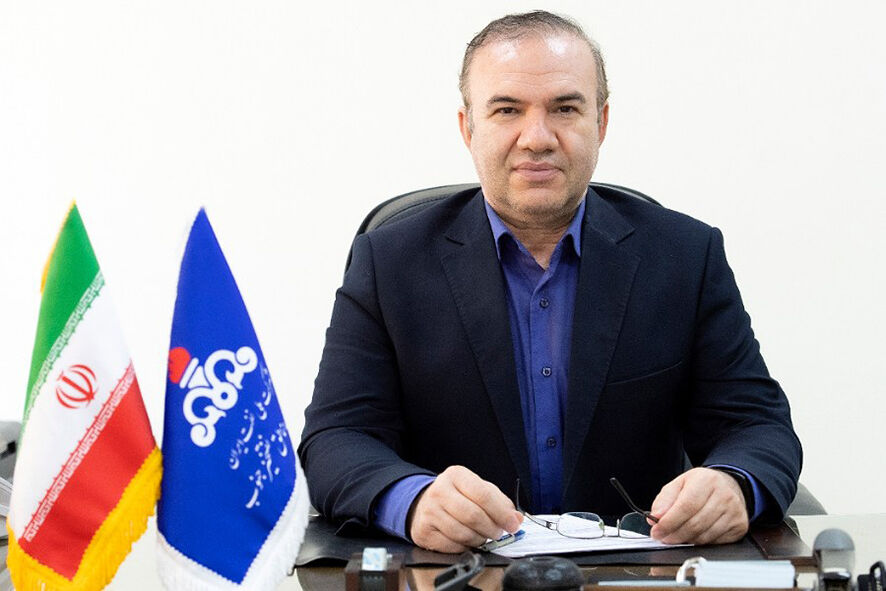The following is the text of “Iran Petroleum’s” interview with Nourani.
How do you compare NISOC’s oil output before and after former US president Donald Trump re-imposed sanctions on Iran’s oil sector in 2018?
At domestic refineries, we did not even reduce output due to a shortage of feedstock resulting from sanctions. About 85-90% of local refineries’ feedstock is supplied by various fields like Ahvaz, Maroun, and Gachsaran. Currently, due to international conditions and sanctions, production from some export reservoirs like Ab Teimour, Mansouri, Gachsaran, and Aghajari has declined, which we are reforming. NISOC’s crude oil production capacity reached 2.9 mb/d in early 2022, i.e. pre-sanctions levels, which can be increased if suitable conditions are prepared. NISOC’s output ceiling was 2.8 mb/d before Trump imposed sanctions. But after sanctions were reinstated, it dropped to 1.1 mb/d in June 2020, which was the lowest since the 1979 Islamic Revolution. Oil exports also hit their lowest. With arrangements made thereafter, oil production started increasing as of December 2021, which is now standing at 2.4 mb/d.
How much has NISOC’s output grown over the past two years?
We have come from 1.6 mb/d in autumn 2021 to 2.35 mb/d in June 2023, which means we have had a 750 tb/d increase, i.e. 47% up.
Which of NISOC’s subsidiaries were most affected by sanctions?
I would like to note that we make no difference between companies. For instance, Maroun Oil and Gas Production Company (MOGPC) feeds refineries in the country. Therefore, it was running at 90-95% capacity in the midst of sanctions, but it is now close to 100%. Therefore, sanctions have not had any impact on the company. However, Gachsaran Oil and Gas Production Company (GOGPC), Aghajari Oil and Gas Production Company (AOGPC), and Karoun Oil and Gas Production Company (KOGPC) have been the most affected, because, in addition to supplying local refineries’ needs, they supply oil for export.
Which field is the most productive among NISOC-run reservoirs?
The Ahvaz field has the highest output, followed by Maroun and Gachsaran. It should be also added that we are facing 350-500 tb/y of decline in all oil fields, which is natural. Therefore, in order to preserve their oil output, we consider drilling development wells. We have also to maintain surface installations.
How many oil grades does NISOC supply?
We have so far had only two grades (light and heavy) for exports. However, with some modifications, we are now able to produce two new grades – extra-heavy and blended oil. Blended oil is mainly used for lighter products like gasoline and gasoil. Due to the national demand for gasoil and gasoline, this grade is helpful to refineries to boost their products.
Has this grade been supplied on markets?
This grade has been developed for local refineries but is now ready to be exported although sanctions pose a threat to our country.
How much time do you need to reach maximum production?
Ever since it was required to reduce output, NISOC embarked on a cohesive plan to overhaul its installations, which had not been done before due to maximum production. In 2022, nearly 50% of the repair work was done and now we are ready for a full return to market. Some imagine that it would take NISOC many years to return to oil markets, claiming that Iran would need 6 months to 1 year to make up for the 1 mb/d output cut. However, everything was done within two months in two phases. We have now restored the bulk of oil production and reached 80-90% of production capacity.
What percentage of NISOC’s production is spent on feeding petrochemical plants?
Petrochemical plants receive a variety of feedstock, including gas, LPG, and oil, from us. For instance, 65 tb/d of liquid feedstock is delivered to the Bandar Imam Petrochemical Plant. Furthermore, the Bu Ali Sina Petrochemical Plant receives 21 tb/d of naphtha and the Persian Gulf Bidboland gas refinery receives 30 mcm/d of gas from NISOC. NISOC fully supplies the Razi Petrochemical Plant’s 1.8 mcm/d of gas needs. Finally, NISOC supplies 25 mcm/d of gas to the Maroun Petrochemical Plant and more than 90% of oil refineries’ feedstock.
What are NISOC’s future plans?
Given the good situation of oil sales and exports, we expect to return to our production ceiling before next March. We’ve hit records in the past two winters in gas supply. We supplied about 80 mcm/d of gas to resolve the gas imbalance. Given our oil production from oil fields, we predict to deliver another 4 to 5 mcm/d of gas condensate to processing facilities to be finally fed into the national network.


Your Comment